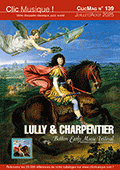 En 1982, on découvre de manière inattendue à Trente un vieux coffre dans un grenier contenant des partitions d'orgue inestimables qui y étaient jouées entre la fin du XVIIIe et le milieu du XIXe siècle, dont celles écrites et jouées par Davide Urmacher, l’organiste local. Avec d’autres pièces du Trentin, elles reconstituent un passage brillant de l'histoire musicale de Trente et nous offrent une image complexe, variée et étendue de la musique d'orgue qui se jouait à cette époque dans la région. Le tout admirablement exécuté dans les styles de l'époque par Simone Vebber sur un orgue historique du XIXe siècle. À Trente, à cette époque, surtout à travers les offices religieux, l'orgue a cette faculté de toucher les oreilles, le cœur et la raison de tous et procure un sentiment de joie et de recueillement intérieur. Cette période marque la transition de l’improvisation vers l’interprétation et le moment de l’arrivée de nombreuses nouveautés du monde allemand. Les choix de timbres, inattendus mais raffinés, sont rendus brillants, dans cet enregistrement, par un clavier extrêmement léger. Merveilleux instantané musical, sentiment de liberté et d’intérioté dans une atmosphère de culture populaire. (Mathieu Niezgoda)  The unexpected finding, in Trento, in the attic of the former German Ginnasio-Liceo, of a typical military trunk dating back to the FirstWorldWar – which I had bought by pure chance in 1982 in an antique shop – makes it possible for us now to reconstruct a brilliant passage in the musical history of that city. The trunk contained some organ scores that had been written by Davide Urmacher (organist at the nearby church of San Pietro) and played by him, first on the fifteenthcentury organ, then on the organ made in 1862 by Giovanni Battista De Lorenzi, from Vicenza. Together with other scores countersigned by members of the Dall’Armi family, owners of a shop near the Ginnasio in Via San Pietro, this treasure chest has yielded some invaluable organ scores that were in use in the city between the end of the eighteenth century and the first half of the nineteenth. This entire collection, together with others (both public and private) existing in Trentino, provides a complex, varied and wide-ranging picture of the organ music that was being played in that period over the entire territory, with a lively circulation of material. The organist Simone Vebber makes use of a historic nineteenth-century organ in the performance of the compositions in the classic theatrical styles of the time.
 |
